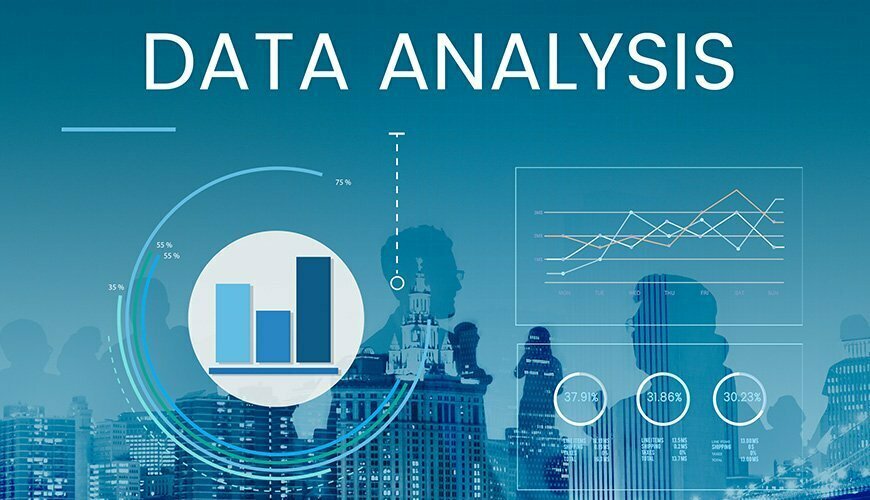Data Analysis: Mastering the Techniques to Outrank Competitors
In today’s data-driven world, data analysis is not just a buzzword but a crucial process that can propel businesses to new heights. As companies amass vast amounts of data, the ability to analyze and interpret this information has become essential for making informed decisions. In this comprehensive guide, we delve into the intricacies of data analysis, exploring techniques, tools, and best practices that can help your business gain a competitive edge.
Understanding the Fundamentals of Data Analysis
What is Data Analysis?
Data analysis is the process of examining, cleansing, transforming, and modeling data with the goal of discovering useful information, informing conclusions, and supporting decision-making. By applying various techniques, analysts can extract actionable insights from raw data, helping organizations to identify trends, solve problems, and make more informed decisions.
Importance of Data Analysis in Business
The significance of data analysis in business cannot be overstated. With the right strategy, companies can:
- Identify market trends: By analyzing consumer behavior, businesses can stay ahead of market trends and adapt their strategies accordingly.
- Enhance customer satisfaction: Understanding customer preferences and pain points allows businesses to tailor their products and services to meet customer needs.
- Optimize operations: Data evaluation can uncover inefficiencies in business processes, leading to cost savings and improved productivity.
- Drive innovation: By examining data from various sources, companies can identify new opportunities for innovation and growth.
For further reading on the importance of data analysis, check out Harvard Business Review’s article on data-driven decision-making.
Key Data Analysis Techniques
Descriptive Analysis
Descriptive analysis involves summarizing historical data to identify patterns and trends. This technique answers questions such as “What happened?” and “What is happening now?” Tools used in descriptive analysis include data visualization software and reporting tools.
Diagnostic Analysis
Diagnostic analysis examines data to determine the reasons behind certain outcomes, addressing questions like “Why did this happen?” This often involves statistical methods and data mining techniques to identify correlations and causations.
Predictive Analysis
Predictive analysis uses historical data to forecast future events. By leveraging machine learning algorithms and statistical models, businesses can predict trends and outcomes with high accuracy. This type of analysis is useful in sales forecasting, risk management, and customer segmentation.
Learn more about predictive analytics in this MIT Sloan Management Review article.
Prescriptive Analysis
Prescriptive analysis recommends actions to achieve desired results, using optimization techniques, simulation models, and artificial intelligence. This advanced form of analysis helps determine the best course of action in various scenarios.
Essential Data Analysis Tools
Microsoft Excel
Excel remains one of the most widely used tools for data analysis due to its versatility and ease of use. Features like pivot tables, data visualization, and advanced formulas make it suitable for both simple and complex tasks.
Tableau
Tableau is a leading data visualization tool that allows users to create interactive dashboards. It is particularly useful for exploratory data analysis, enabling users to drill down into data to uncover hidden insights.
R and Python
Programming languages like R and Python are essential for advanced analysis. R excels in statistical analysis, while Python offers flexibility and extensive libraries for machine learning and data visualization.
For more on R and Python, check out DataCamp’s guide to data analysis with R and Python.org’s resources on data science.
Power BI
Power BI, a business analytics service by Microsoft, provides interactive visualizations and business intelligence capabilities. It helps create dashboards, reports, and data models efficiently.
Best Practices for Effective Data Analysis
Define Clear Objectives
Before starting any analysis project, define clear objectives to guide data selection, analysis techniques, and tools, ensuring alignment with business goals.
Data Collection and Preparation
The quality of your analysis depends on the data used. Ensure data accuracy, completeness, and relevance through data cleaning, normalization, and transformation.
Use Appropriate Analysis Techniques
Choose the right analysis technique for your business problem. For example, use descriptive and diagnostic analyses for understanding current behaviors and predictive analysis for forecasting future trends.
Visualize Your Data
Data visualization makes complex data more understandable. Present your data through charts, graphs, and dashboards to convey insights effectively to stakeholders.
Interpret and Act on the Results
Data analysis aims to drive decision-making. After analyzing the data, interpret the results accurately and take appropriate actions based on the insights.
Challenges in Data Analysis
Data Quality Issues
Poor data quality can lead to inaccurate analysis and misleading conclusions. Common issues include missing data, duplicate entries, and inconsistent formats. Address these issues during the data preparation phase.
Complexity of Analysis
As data volume and complexity increase, so do the challenges of analysis. Advanced techniques may require specialized knowledge, presenting a barrier for many organizations.
Data Security and Privacy
Ensuring compliance with data privacy regulations, such as GDPR and CCPA, is crucial. Implement robust security measures and anonymize sensitive data where necessary.
Conclusion: The Future of Data Analysis
Data analysis is continually evolving, with new tools and techniques emerging to handle growing data complexity. As reliance on data-driven decision-making increases, the demand for skilled data analysts will rise. Mastering data analysis fundamentals and staying updated with trends will provide your organization with a significant competitive advantage.


